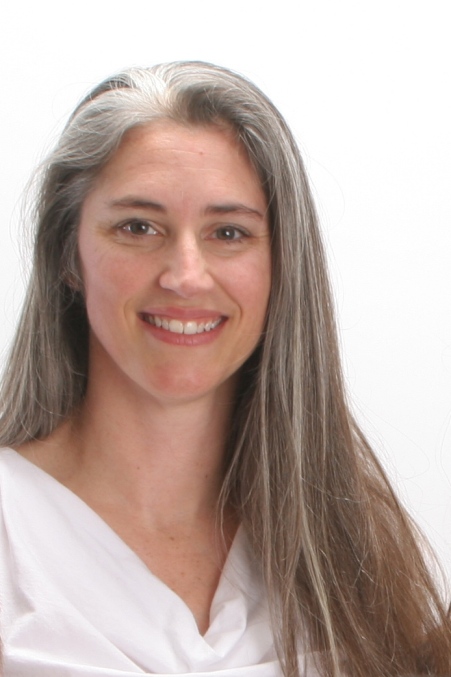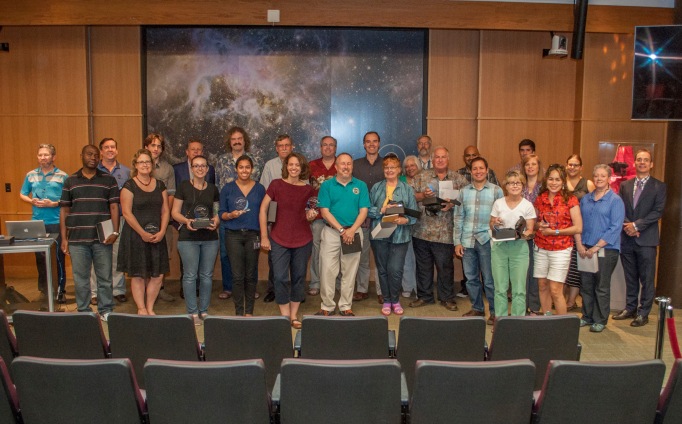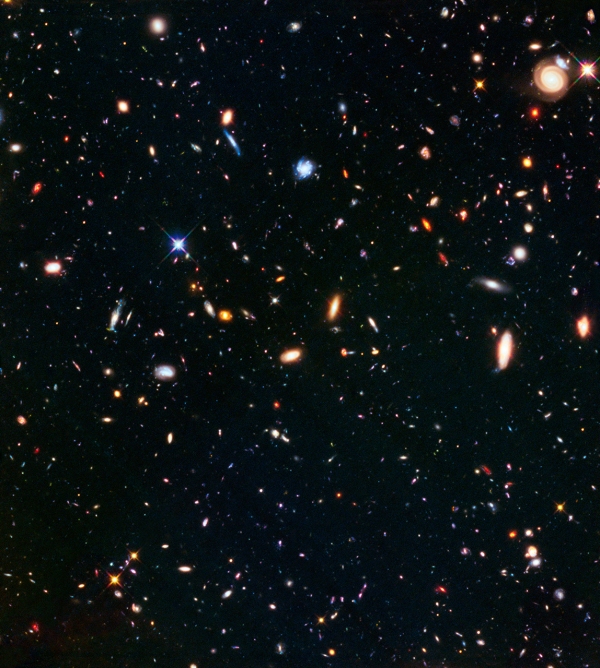This occasional series focuses on members of the Frontier Fields team. It highlights the individuals, their jobs, and the paths they took to get to where they are today.

Tricia Royle, senior program coordinator, answers questions about her role on the Frontier Fields program and the path she took to get there.
What does a typical day on the job entail? What are your responsibilities?
When astronomers are granted time on Hubble, their program is assigned to a program coordinator to make sure the observations are feasible and schedulable on the telescope. When problems occur any time between acceptance and execution, it’s the program coordinator who helps get problems resolved. We act as liaisons between the various groups at the Space Telescope Science Institute (STScI) — science, operations, scheduling — and the observers — principal investigators and co-investigators. I tend toward the large-scale and long-term observations like Frontier Fields.
What specifically is your educational background?
I have a BSc in physics and astronomy from York University in Toronto, Ontario, Canada, and I have taken postgraduate courses in applied physics from Johns Hopkins University in Baltimore, Maryland.
What particularly interested you in school or growing up? What were your favorite subjects?
I wasn’t particularly good at school in the early years and didn’t like the monotony of memorizing multiplication tables or writing out spelling words. In grade six, when the curriculum started to get interesting and turn more logic-based, I started to pay attention and actually enjoyed just about every class — except history, which still had too much memory work. In high school, it became clear that math and science were my favorites, though I still took a lot of English and arts courses because I enjoyed the creativity involved.

Nineteen-year-old Tricia on her fifth or sixth trip to Kennedy Space Center in Florida. Tricia recalls, “It was pretty much the first place I asked to go every time I’d go to Florida. Eventually, my family just accepted it as higher priority than Disney World.”
How did you first become interested in space?
Growing up in a very rural area about an hour outside of Toronto, surrounded by farms and no streetlights, I had always been able to see the Milky Way, but I didn’t know much about what I was seeing. When I first read that our sun was a star and figured out that meant every star I was seeing was potentially someone else’s “sun,” it was pretty humbling. I wasn’t very old and I’m pretty sure I annoyed a lot of aunts and uncles with my new-found “discovery” that our sun is actually a star. I didn’t understand how they could talk about anything else if they knew how many suns there were in the sky! Weather and gas prices just didn’t seem important enough to warrant discussion when compared to my new sun/star revelation.
Was there someone or something that influenced you in developing a love for what you do, or the program you’re a part of? Was there a particular event that especially captured your imagination and led to life changes?
A lot of things happened when I was in my pre-teens and teenage years to push me toward space. I remember feeling intense sadness and disbelief after the Challenger disaster. I was in middle school, just starting to enjoy learning, and had a hard time dealing with the idea that a teacher who was supposed to go into space, then come back to share her experience with her classroom and other classrooms, now wasn’t coming back at all. I hadn’t realized before then how dangerous it was to launch a shuttle and couldn’t see past the loss of those seven astronauts to understand why anyone would take that risk.
A year or so later, Star Trek: The Next Generation came on TV, and it all started to make sense. I loved the scientific language and ideas in the show and the notion of “going where no one had gone before.” Traveling around on the Enterprise seemed like a dream come true, and I started to understand why someone would put everything at risk to go into space. Star Trek: The Next Generation was my first exposure to positive science fiction — not just doomsday aliens and robots — and it introduced me to the concept of just how much more might be out there and what might be possible. Hubble launched a few years after that, when I was in high school, and started sending back incredible images of real things that were actually out there, waiting to be found. It seemed to me that maybe a bit of the show was coming to life and I wanted to know more.
When it came time to choose a topic for my first high school term paper — it happened to be advanced chemistry — I decided it was a good excuse to find out more about all those suns/stars I had seen in the sky as a child, on Star Trek for the past four or five seasons and now coming down from Hubble. This seemed like a really good idea until my 10-page report was closer to 30 pages, and I still had several books to go through. Thankfully, I had a wonderful chemistry teacher who encouraged me to delve as deep as I wanted into the topic, but to choose something specific to keep the final paper under 15 pages so she could finish reading it in an evening. I chose to focus on the life cycle of stars, and that was the beginning of my intense curiosity about the science of space and the universe.

On a later trip, 21-year-old Tricia poses at the entrance to Kennedy Space Center.
How did you first get started in the space business?
The summer after my third year at York University, I worked with Dr. John Caldwell analyzing Hubble data on the low-mass stellar companions of larger stars. During that summer, he visited STScI and Johns Hopkins University to attend a conference and meet with his collaborators. I was invited to tag along. I imagine I looked a little — or a lot — lost and awkward standing among seasoned Hubble scientists and STScI employees in the auditorium after a talk. Fortunately, one of the Hubble data analysts took pity on me and invited me into her conversation. Lisa Frattare — now part of Hubble Heritage — became an instant friend and would later encourage me to apply to work at STScI after graduation.
I didn’t take her seriously, thinking there was no way a fresh-out-of-school job could be with something as huge as Hubble. But on a dare with one of my college roommates, we both applied for our unattainable dream jobs — I applied to STScI and he applied for a coaching job at the University of Hawaii. As luck would have it, I got an interview and came to work at STScI shortly after graduation as a program coordinator. Sadly, my roommate did not make it out to Hawaii.
Before I left York University, Dr. Caldwell described my new position at STScI as “the hot seat of astronomy,” which ended up being an understatement. Immediately after I started, I was working with and attending conferences with scientists I’d seen listed in textbooks. In my first two years, I had the opportunity to work with the Director of STScI — Robert Williams — and many others on the Hubble Deep Field to push the science limits of the telescope, and to join Lisa Frattare and Keith Noll on the Hubble Heritage Project to help make beautiful images from Hubble’s scientific data. I worked with Hubble Heritage for five years and still think it is one of those really great initiatives that highlights for everyone, not just scientists, what Hubble can do. All in all, not a bad start to a career in space.
What do you think of the Hubble results, or the impact that Hubble has on society?
I think people have started to take for granted the amazing images Hubble continues to allow scientists to take. It’s been up there for almost 26 years, which means there are a lot of kids and even adults who don’t know what it’s like to NOT have these observations sent down on a regular basis, or what it was like before Hubble helped solve some of the fundamental questions about the expansion of the universe and what is out there. I have two school-aged kids who just assume that Hubble has or will answer any question they may have about stars or galaxies. I don’t think it occurs to them that Hubble hasn’t always been and won’t always be around to do that.
The fact that it is such an ingrained part of the scientific and academic community says just how successful it has become. It’s like the Internet – it’s hard to remember what it was like before we had this way to find answers to our questions. I suspect Hubble’s archives and legacy programs will continue to provide answers, or trigger new questions, for a long time yet.
Is there a particular image or result that fascinates you?
The Ultra Deep Field, or UDF. I found out I was pregnant with my first child just after I started working as program coordinator for the UDF, and the UDF images were released while I was still in the hospital after delivering my daughter — so I will forever tie those two events together. But more than that, I still use the UDF image in my presentations, even though it is almost 12 years old, because it fascinates everyone who learns what they are really looking at. I ask people to look at that image and realize that what they are seeing aren’t individual stars, but galaxies. Then I ask them to keep in mind that this particular piece of sky was chosen because it was “boring,” and to further consider that everything they are seeing is contained within a patch of sky the size of the president’s eye on a dime, held at arm’s length. More than a few jaws drop at the implication. Seeing the UDF image triggers that realization in people, especially kids, of just how vast the universe must be easily makes the UDF my favorite.
Are there specific parts of the program that you’re especially proud to have contributed to?
I like the view from where I sit in Operations. I like watching a Hubble program develop from the initial science outline in the Phase 1, to a workable Phase 2, to a successfully executed set of observations. I especially love the large and multi-cycle programs — 47 Tuc, Hubble Deep Field, Ultra Deep Field, Andromeda, CANDELS, and now Frontier Fields. They allow me to work with people who have such a passion for what they do on these in-depth programs and challenge me to find new ways to get them the science they need.
Because repeat observers are assigned, when possible, to the same program coordinator each time they observe, that working relationship has a chance to grow cycle after cycle. Program coordinators tend to get very attached to the scientists they work with multiple times. I’ve been here since Cycle 6 and now we’re ramping up for Cycle 24, so the list of observers I claim as mine is pretty long, and I feel very protective of them and their observations, even if they’ve moved on to other program coordinators or even other telescopes.
What outside interests could you share that would help others understand you better?
A lot of what we do on Hubble can feel abstract and intangible, since we can’t actually go to the telescope or out in space to touch what we observe — so I like to do things that produce more tangible, immediate results. In addition to my love of reading and watching sci-fi TV shows, I do a lot of crafts to create something I can hold in my hand.
With most of my observers scattered around the country and internationally, I rarely see them in person. Giving talks about Hubble to schools and the more general public lets me connect the science to people. Being able to explain a Hubble image to someone without a science background and make it real for them, helps put into perspective that what I do at work on a daily basis can be inspiring and has results beyond the image itself. I want what we do at STScI and on Hubble to show people they can dream as big as they like because the universe is big enough to handle it.
Is there anything else that you think is important for readers to know about you?
I was one of only four female physics and astronomy majors in my first year at York University. Before classes even started, my academic advisor suggested that I might want to choose something easier than physics and astronomy, despite coming in with an A+ average in high school and scoring in the top 5 percent on the math assessment. Male classmates with B averages were not given the same suggestion to find an easier major.
In the years ahead, every test grade of mine that fell below an A – there weren’t many – brought up the question from others, and myself, as to whether I really should be there, whether I was good enough. It was a constant fight to prove to classmates, professors and myself that I deserved to major in physics and astronomy. It wasn’t enough that I wanted to be there and was passing my courses – I had to excel. Four of us started, but I was the only female graduate in physics and astronomy in my year.
I have a daughter and a son, still relatively young, but they’re starting to look at what they want to do when they finish school. Obviously I want them to do well, but my wish for both of them, and anyone else looking at what to do in their life, is that in whatever field they choose, they know that wanting to be there is enough and they don’t have to prove to anyone they deserve to follow their dreams.
Also see “Spotlight on Jennifer Mack, Research and Instrument Scientist”
and “Spotlight on Dan Coe, ESA/AURA Astronomer”






















